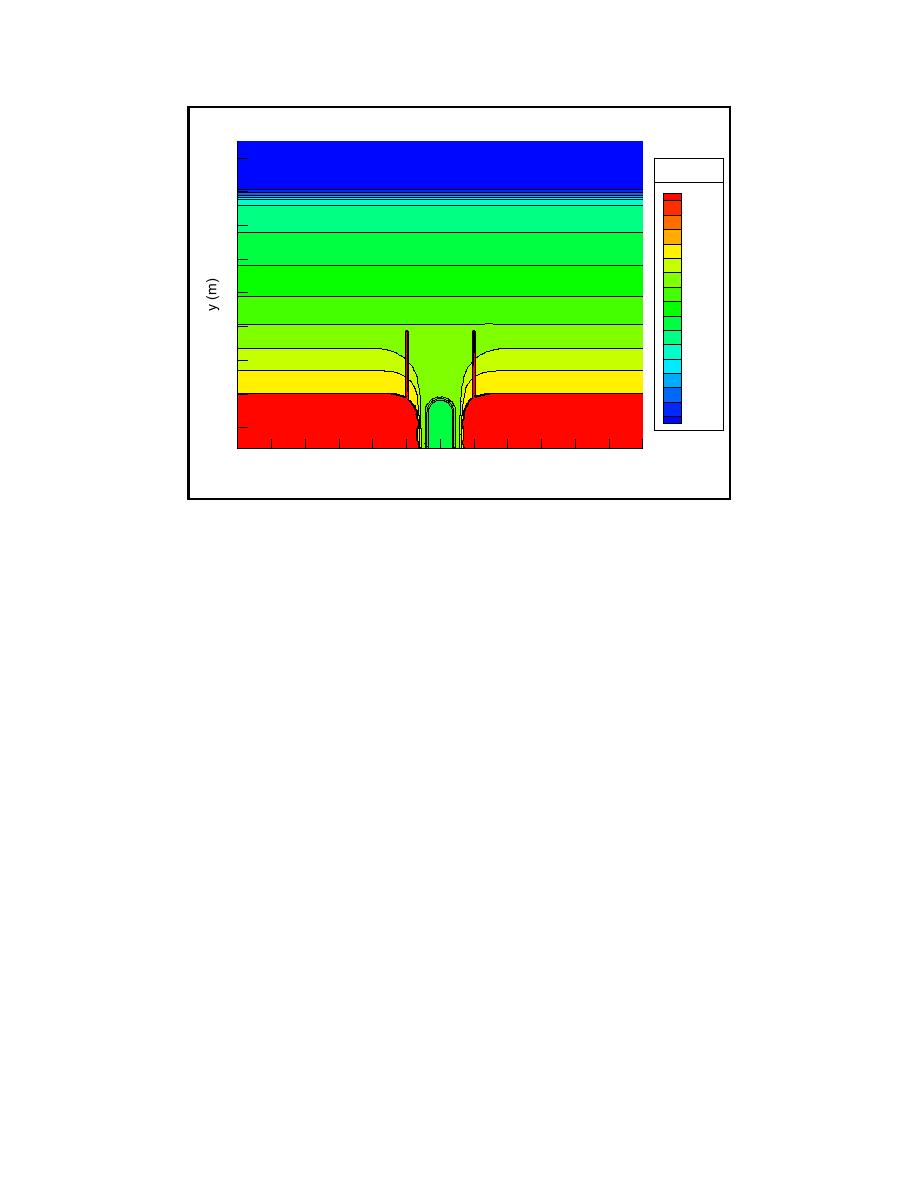
14
Elev. (m)
12
0.05
0.025
10
0
-0.025
8
-0.05
-0.075
-0.1
6
-0.125
-0.15
4
-0.175
-0.2
2
-0.225
-0.25
-0.275
0
-0.3
-0.325
-2
-12 -10
-8
-6
-4
-2
0
2
4
6
8
10
12
x (m)
Figure 26. Bathymetry of idealized inlet for wave-current interaction study
A 2-D hydrodynamic model was run to provide the current field for use in
the wave model simulations. Figure 27 shows a map of the current field
generated by the model. Boussinesq model simulations were carried out using
grid spacings ∆x = ∆y = 0.075 m and time-step size ∆t = 0.015 s. The incident
wave conditions were characterized by a TMA spectrum with Hmo = 0.055 m,
Tp = 1.4 s, and γ = 3.3. The predicted wave height distributions for current speeds
U = 0 m/s and U = 0.24 m/s are shown in Figures 28 and 29, respectively. The
Boussinesq model predicted an increase of 15 to 20 percent in the significant
wave height near the entrance channel. The laboratory measurements, however,
showed a slight decrease in wave height through the channel due to the effect of
wave breaking. A more detailed investigation of the wave-breaking criterion and
energy dissipation rates in the presence of currents will be carried out to improve
simulations of wave-current interaction in the Boussinesq model.
Wave Transformation Near Ponce de Leon Inlet,
Florida
Ponce de Leon Inlet, an inlet leading into the Halifax and Indian Rivers in
Florida has a complex bathymetry featuring a large ebb shoal, a navigation
channel, and a jetty. A 1:100 laboratory model study of a 4.2-km by 1.4-km
region near the inlet was carried out at the U.S. Army Engineer Research and
Development Center (ERDC) Coastal and Hydraulics Laboratory (CHL). Tests
were conducted for sea states with different wave heights, peak periods, spectral
widths, and directional spread. The TMA spectrum was used to describe the
frequency distribution of wave energy, while the wrapped-normal distribution
54
Chapter 5 Model Validation



 Previous Page
Previous Page
